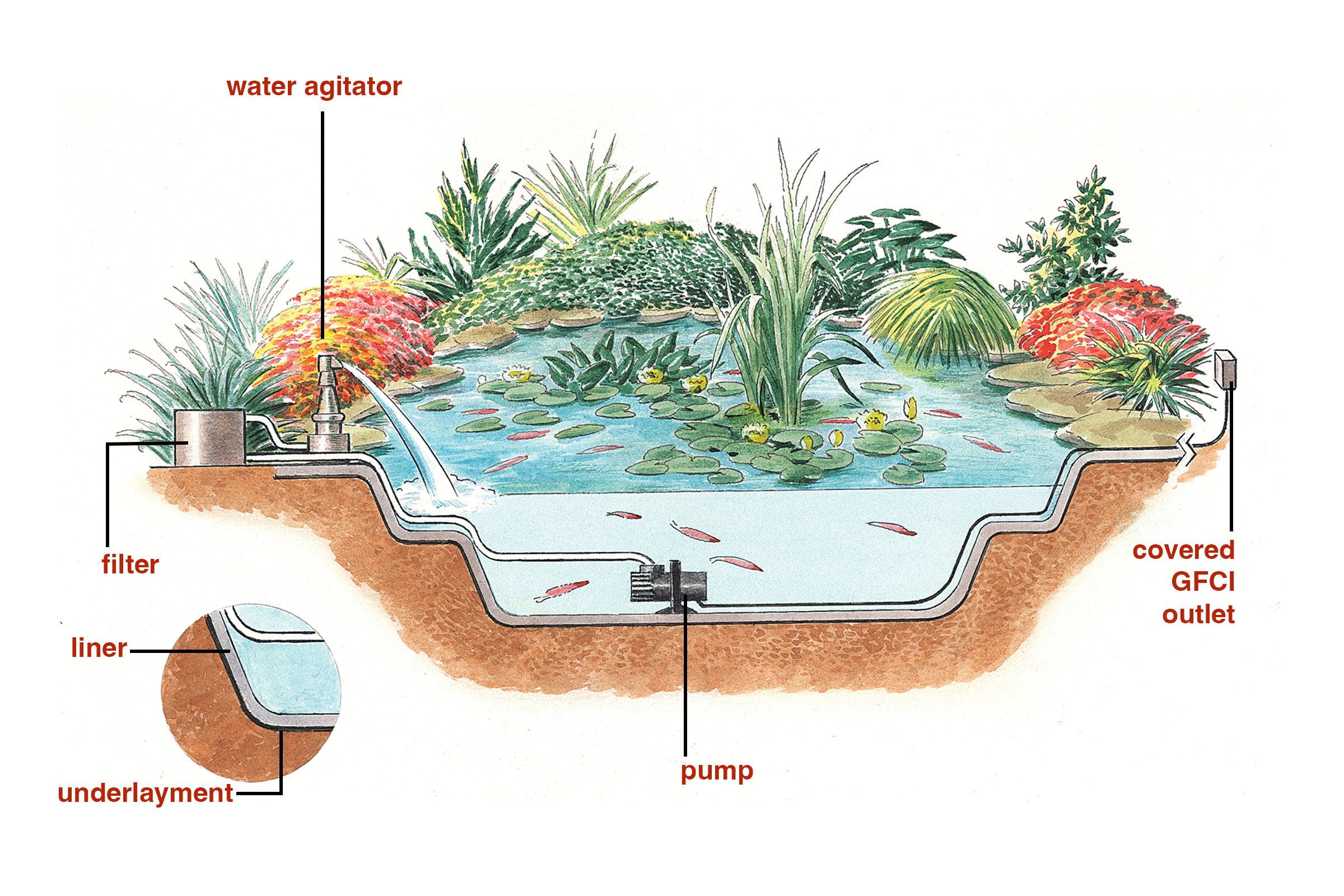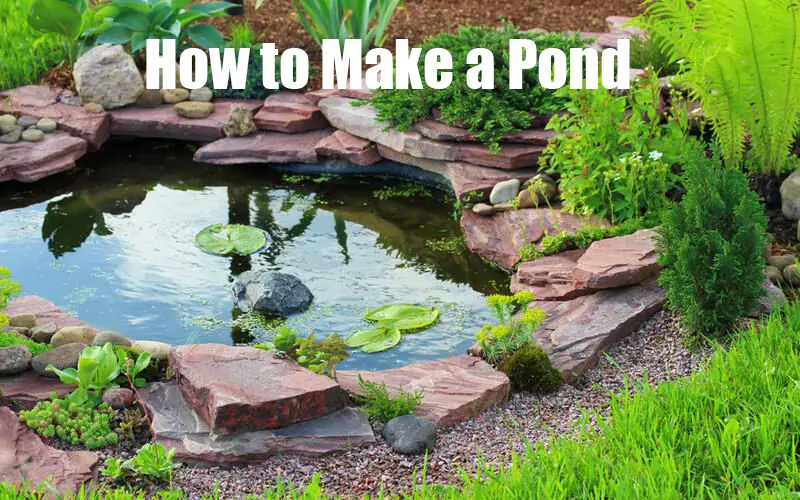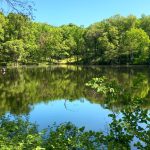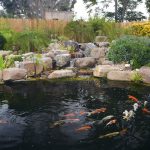Creating a pond in your backyard can be a wonderful addition to your landscape, providing a serene and tranquil environment for relaxation and a habitat for various aquatic plants and animals. Whether you want to build a small decorative pond or a larger one that supports fish and wildlife, this guide will walk you through the process of making your own pond.
1. Planning Your Pond
Before you start digging, it’s crucial to plan your pond carefully. Consider the size, shape, and location of the pond. Determine if you want a natural-looking pond with rocks and plants or a formal one with clean lines and a geometric shape.
2. Choosing the Right Location
Find a suitable location for your pond that receives the right amount of sunlight and shade, away from overhanging trees to minimize leaf litter. Ensure that the ground is level and free from any underground utility lines.
3. Digging the Pond
Once you’ve marked the outline of your pond, it’s time to start digging. Use a shovel or a mechanical excavator to dig the pond to your desired depth and shape. Create shallow and deep areas to support different types of aquatic life.
4. Installing the Pond Liner
After the excavation, it’s important to install a pond liner to prevent water from seeping into the surrounding soil. Choose a high-quality, durable liner that fits the shape and size of your pond, ensuring there are no folds or wrinkles that could cause leaks.
5. Adding Water and Filtration
Fill the pond with water and install a filtration system to keep the water clean and clear. Consider adding a pump and a biological filter to maintain a healthy balance of beneficial bacteria and remove debris and waste from the water.
6. Adding Plants and Fish
Introduce aquatic plants such as water lilies, lotus, and submerged plants to provide oxygen, filter the water, and create a natural habitat for fish and other aquatic organisms. When adding fish, choose species that are suitable for the size and depth of your pond.

Credit: www.thisoldhouse.com
7. Landscaping and Maintenance
Enhance the surroundings of your pond with rocks, pebbles, and ornamental grasses to create a beautiful and natural-looking landscape. Regular maintenance, including removing debris, controlling algae, and monitoring water quality, is essential for the long-term health of your pond.
8. Safety Considerations
It’s important to consider safety measures, especially if you have young children or pets. Install a sturdy fence or barrier around the pond to prevent accidental falls and ensure that the water is not too deep for small children or animals to safely navigate.
So now it’s clear to you how you can build a pond (DIY). Now by following these steps, you can easily build a pond.
Frequently Asked Questions
Q: What are the first steps to planning a pond?
A:
-
- Determine the pond’s purpose (e.g., decorative, wildlife habitat, fish pond).
- Choose an appropriate location considering sunlight, soil type, and proximity to trees and structures.
- Check for any local regulations or permits required.
Q: What materials do I need to build a pond?
A:
-
- Pond liner (usually rubber or PVC)
- Underlayment for the liner
- Rocks and gravel
- Pond pump and filtration system
- Plants and pond decorations
- Water (to fill the pond)
Q: How do I choose the right size and shape for my pond?
A:
-
- Consider the available space and the pond’s intended use.
- Ensure the pond is deep enough if you plan to have fish (typically at least 18 inches for small fish, deeper for larger fish).
- Think about the aesthetic and how it will fit into your landscape design.
Q: What type of liner should I use for my pond?
A:
-
- Rubber liners (EPDM) are durable and flexible.
- PVC liners are less expensive but may not last as long.
- Preformed liners are rigid and easier to install but limited in shape and size.
Q: How do I dig and prepare the hole for the pond?
A:
-
- Mark the outline of the pond on the ground.
- Dig the hole, creating shelves at different depths for plants.
- Remove any sharp objects that could puncture the liner.
- Add a layer of sand or underlayment to protect the liner.
Q: How do I install the pond liner?
A:
-
- Lay the liner loosely in the hole, allowing for some slack.
- Smooth out wrinkles and ensure it covers all surfaces.
- Secure the edges with rocks or soil.
- Fill the pond slowly with water, adjusting the liner as needed.
Q: What kind of filtration system do I need?
A:
-
- A mechanical filter to remove debris.
- A biological filter to promote beneficial bacteria growth.
- A pump to circulate water through the filters.
Q: What plants are suitable for a pond?
A:
-
- Marginal plants like cattails and irises.
- Floating plants like water lilies and duckweed.
- Submerged plants like anacharis and hornwort.
Q: Can I add fish to my pond?
A:
-
- Yes, but ensure the pond is properly cycled and the water quality is good.
- Common pond fish include koi, goldfish, and mosquito fish.
- Provide adequate depth and hiding places for fish.
Q: How do I maintain my pond?
-
- Regularly clean filters and check the pump.
- Remove debris and dead plants.
- Monitor water quality and perform partial water changes as needed.
- Control algae growth with plants, UV clarifiers, or chemical treatments.
Q: What are some common problems with ponds and how do I fix them?
A:
-
- Algae bloom: Reduce nutrients, add plants, and use algaecides or UV clarifiers.
- Leaks: Check the liner for punctures, and repair with patch kits.
- Poor water quality: Increase filtration, perform water changes, and check for overfeeding of fish.
Q: How do I winterize my pond?
A:
-
- Remove tender plants and bring them indoors.
- Stop feeding fish when temperatures drop below 50°F (10°C).
- Use a pond heater or de-icer to keep a hole in the ice for gas exchange.
- Disconnect and store pumps and filters if not designed for freezing temperatures.
Final Words
Building a pond can be a rewarding and enjoyable project that adds beauty and tranquility to your outdoor space. With careful planning and proper maintenance, your pond can become a thriving ecosystem that enhances the overall aesthetic and environmental value of your property.





